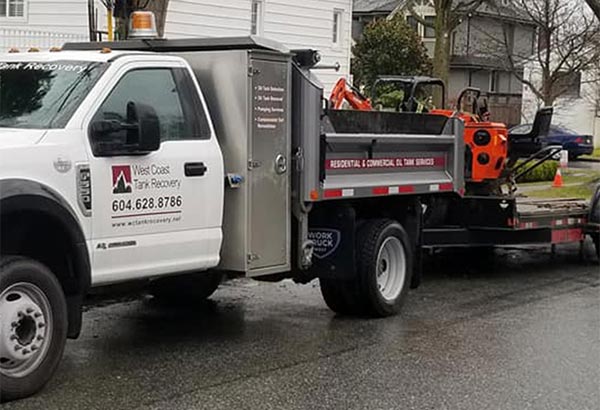 Fully Licensed and Insured
Fully Licensed and Insured Request an Oil Tank Scan
Request an Oil Tank Scan Request a Free Estimate
Request a Free Estimate

If you are thinking about purchasing a property developed between the 1940s and 1980s, you will want to confirm that there isn’t an oil tank underground before completing the purchase. Oil heat was popular from the 1940s into the 1990s, but around 1975, most communities started moving away from underground oil tanks to natural gas. What this means for you today, is that if a property has a house that was built on it before 1975, there is a high risk it contains an oil tank underground. Through the simple step of oil tank scanning prior to purchase, you will be able to effectively limit future liability related to a leaking oil tank.
If you have confirmed a property you would like to purchase has an oil tank on site, the first step will be to hire a company to test the soil surrounding the underground oil tank. The seller is required to pay for this expense, and it must be completed before the property can be sold to you, to ensure that you don’t take on the liability of a leaking tank. After all, you need to know if the tank is leaking before you move forward with a potential purchase.
Look for a company that will guarantee their soil test results for a period of time, such as until you or the current property owner are ready to remove the tank. If the soil is clean and the tank hasn’t yet started leaking, you will still want to insist on tank removal by the property owner before you purchase the property and take on the liability related to the oil tank.

If the tank is found to be leaking, then the liability for the cleanup falls back to the seller, since they still own the property. If they choose not to clean it up prior to the sale, then you can walk away from the deal. The small expense of having oil tank scanning and soil tests done could save you tens of thousands of dollars in soil remediation and cleanup costs.
Leaking oil tanks can cause problems with nearby groundwater supplies and can contaminate soil. Soil disposal and site remediation can be a costly and extensive process, so if the tank hasn’t leaked yet, remove it before you’re liable for environmental costs.
In addition to environmental concerns, old oil tanks may leak vapours that contain known carcinogens. Such vapours can cause nausea and respiratory issues, or create a fire hazard due to their flammable nature.
If the soil is clean and you still want to purchase the property, you can arrange oil tank removal with the owner before closing on the property. Costs will vary for the service, depending on the size and location of the tank.
Before buying a property, do your due diligence and ensure there isn’t a leaking oil tank on site. Through oil tank scanning, you will ensure you limit any future liability and save yourself money in cleanup costs and other related issues.